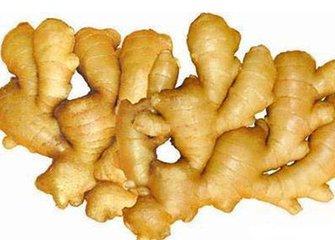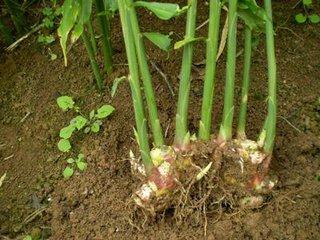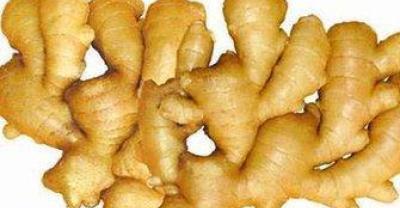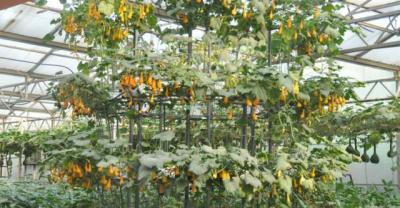Teach you how to grow ginger with high yield and high quality
Ginger is the fresh rhizome of ginger, a perennial herb of Zingiberaceae. The rhizome, cork and leaves of ginger can be used as medicine, and ginger has the functions of dispersing, relieving vomiting and relieving cough in traditional Chinese medicine. Ginger is also a common condiment. Because the yield of ginger planting is generally high, the planting cost is low, and the economic benefit is good. Therefore, it is widely liked by farmers and has a high enthusiasm in growing ginger. In order to achieve high yield and high quality in the cultivation of ginger, we must pay attention to the following aspects:

First, fine soil preparation and effective rotation
It is precisely because of the small root system and small distribution range of ginger, ginger likes the land with deep soil layer, fertile soil and rich organic matter. In the process of planting ginger is afraid of both drought and waterlogging. It is necessary to choose sandy loam soil with loose and fertile soil, good watering conditions and convenient drainage and irrigation. Generally, the land used to plant ginger needs to be deeply ploughed in the public field, so that the soil can be sufficiently weathered and loose; fine soil preparation should be carried out as early as possible in spring to facilitate the growth and development of ginger roots. When preparing the soil, you can first sprinkle 35 kilograms of lime powder, disinfect the soil, and then plant it in trenches. The cultivation of ginger should choose higher terrain, convenient drainage and irrigation, and the previous crop had better be grain field or garlic field. The cultivation of ginger should pay special attention to not planting ginger continuously on a piece of land, which is not conducive to the prevention and control of ginger diseases and insect pests.
Second, select ginger varieties and cultivate strong buds
Ginger varieties selected by ①
The seed selection of ginger should be carried out according to the use, the local climate and the yield of ginger. In general, small pieces of ginger have small ginger head, many branches, fine, spicy taste, but generally low yield, while lion-headed ginger has large head, few branches and light taste, so it is suitable for pickling and the yield is higher. Therefore, in seed selection, we should choose the appropriate variety according to the market demand.
Cultivation of strong buds by ②
After selecting the ginger, the ginger should be taken out from the storage cellar in the first and middle of March every year, wash the soil off the ginger pieces with clean water, and spread it flat on the grass mat or clean ground to dry for 1 or 2 days. The dried ginger should be covered with a grass curtain to ensure the decomposition of nutrients as far as possible. Then soak the ginger seeds with Bihuo 3g + 80% carbendazim 100g, mixed with water 15-20kg, soak the ginger seeds at a temperature of 22-25 ℃ and humidity at 70-80% for 25-30 days. When the ginger buds grow out about 1 cm, they can be taken out and sown.
③ sowing at the right time, reasonable close planting
The sowing time of ginger is generally chosen to be carried out in the open field in the middle and last ten days of April, and protected cultivation can also be selected in the middle of March. Ginger ditch on the top width of 30 cm, ditch depth of 30 cm, to achieve deep ditch shallow cover. The bottom of the ditch should be watered when planting. The sowing of ginger is generally carried out in batches, first sowing big buds and strong buds, then sowing small buds and weak buds, ginger pieces flat at the bottom of the ditch, buds facing one direction, east-west ditches, buds facing southeast; north-south ditches, buds facing southwest. Cover soil 2cm and 3cm in time after sowing.
Reasonable close planting: large ginger 7000cm ∕ mu, row spacing 50cm, plant spacing 18cm 20cm, seed amount 40000kg / mu, small ginger 75008000 plant ∕ mu, row spacing 50cm, plant spacing 16cm / mu, seed quantity 350kg / mu. The size of ginger pieces is closely related to the yield. Using larger pieces of ginger to plant seeds not only emerges early, accelerates growth and development and matures earlier, but also has high yield.

Third, apply sufficient base fertilizer and topdressing for many times
Due to the fertilizer characteristics of ginger, especially the demand for potash fertilizer is large, but the demand for phosphate fertilizer is small. Therefore, in the process of planting, we must apply sufficient base fertilizer; the implementation of base fertilizer should be 4000kg to 5000 kg per mu of high-quality soil fertilizer, or 100kg to 200kg organic fertilizer, 2kg to 4kg of biological fertilizer, 70kg to 80kg of 45% (16-9-20) formula fertilizer; medium to trace: 40 kg of high calcium potassium ammonium, 2 kg of zinc fertilizer, 1 kg of boron fertilizer, and then fine soil preparation, ditching and ridging.
In the process of planting crops, we should pay attention to topdressing, and the cultivation of ginger can not be ignored. The topdressing of ginger should be applied frequently and lightly, from light to thick. Especially in the seedling stage, the plant growth is small, and the amount of fertilizer required is also small, but the seedling stage is very long. In order to make the seedlings grow healthily, the first topdressing is usually carried out when the seedling height is about 30 cm and has 1-2 small branches. It is called "small topdressing" or "strong seedling fertilizer". And the second topdressing should be carried out before and after the Beginning of Autumn, which plays an important role in promoting rhizome expansion and obtaining high yield. This topdressing can apply 50 kg of rotten cake fertilizer per mu, or 2000 kg of high-quality farm manure, plus 10-15 kg of compound fertilizer, which is called "big topdressing" or "turning point fertilizer". Before and after the Autumn Equinox, he applied "strong tail fertilizer" or "expansion fertilizer" again, and applied compound fertilizer 10kg to 15kg.

IV. Strengthening field management
① water management
Ginger in the germination period must be done to the end of the water to be thoroughly watered, the first water should be timely. Usually, it is not until the emergence of about 70% of the seedlings that the first water is poured. 2-3 days after the first water, followed by the second water, and then ploughing to preserve soil moisture, ginger seedlings can grow healthily. In the ginger seedling stage, it is necessary to water the ginger frequently, dig the hoe in time, break the soil consolidation, and clear the trench and drain in time after the rainstorm. In the peak period of ginger growth to achieve frequent watering, it is appropriate to maintain moderation in the morning and evening to prevent stagnant water. Generally every 4 to 6 days to pour water, often keep the soil relative humidity at 75% 85%, conducive to growth. Pour water again 3-4 days before harvest, so that there is wet soil on the ginger pieces during harvest, which is beneficial to storage in the cellar.
Ploughing soil in ②
The root system of ginger is shallow and only shallow ploughing is suitable to prevent diseases caused by root injury. Weeding and soil cultivation are carried out simultaneously. Generally, the first soil cultivation is carried out when the ginger has 3-5 branches and the rhizome is not exposed to the surface. In late June, the soil was about 2 cm thick. The second soil cultivation should be carried out about 20 days after the first small soil cultivation, with a thickness of 2 cm to 3 cm, and this soil cultivation should not be too thick. The third soil cultivation was conducted 15 to 20 days after the second soil cultivation, that is, before and after Greater Heat, the thickness was 7 to 8 centimeters, and the original ridge was turned into a ditch and the original ditch into a ridge.
③ shade timely and promote growth
Because ginger is a shade-tolerant crop, direct sunlight affects the growth of seedlings. Sunshade net or artificial shade shed is used after sowing, and then the shed is dismantled after the End of Heat. In the whole growth period of ginger, the leaves were sprayed with green protection, once every 10 days, three times in a row to promote growth and prevent disease.

Increase the income of farmers!
- Prev

Where is the highest yield of Chaotian pepper planted by farmers?
Chaotian pepper is a perennial semi-woody plant of Solanaceae. The whole grass is used as medicine, the rhizome is warm and sweet, can dispel wind and cold, relax muscles and activate collaterals, and has insecticidal and anti-itching effect.
- Next

Farmers grow ginger: pay attention to these items
Strictly select land and avoid continuous cropping: select sandy loam, loam and clay loam with fertile soil, deep soil layer, good air permeability, rich organic matter and strong water and fertility conservation.
Related
- Fuxing push coffee new agricultural production and marketing class: lack of small-scale processing plants
- Jujube rice field leisure farm deep ploughing Yilan for five years to create a space for organic food and play
- Nongyu Farm-A trial of organic papaya for brave women with advanced technology
- Four points for attention in the prevention and control of diseases and insect pests of edible fungi
- How to add nutrient solution to Edible Fungi
- Is there any good way to control edible fungus mites?
- Open Inoculation Technology of Edible Fungi
- Is there any clever way to use fertilizer for edible fungus in winter?
- What agents are used to kill the pathogens of edible fungi in the mushroom shed?
- Rapid drying of Edible Fungi

